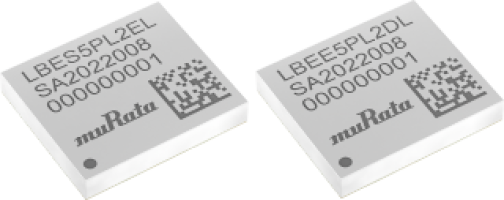[Core Information 04.20] EU agrees on 43 billion euro chip subsidy! (2023/4/20 12:16:00)
1. The EU has agreed on 43 billion euros in core industry subsidies
The European Union has agreed to a 43 billion euro plan to make its semiconductor industry more competitive in an attempt to catch up with the levels of the U. S. and Asia, IT House reported, citing Reuters.
The plan, known as the European Chip Act, aims to increase the EU's share of global chip production from 10 percent now to 20 percent by 2030, coming in place after the US announced its chip bill. The Commission initially had only proposed funding state-of-the-art chip factories, but EU countries and parliaments have expanded to cover the entire value chain, including older chips and research design facilities.
2. The consumer electronics situation is lower than expected, and Samsung wafer foundry reduces prices to grab orders
According to Taiwan, China Economic Daily quoted by Science and Technology Innovation Board Daily, industry insiders believe that the poor market conditions of consumer products is putting pressure on all foundry factories, and Samsung's foundry business is even more dismal. Facing the pressure of shrinking exports to the sea and reducing customer orders, Samsung has to cut prices to grab orders.
As the adjustment of the inventory in the PC and consumer products market is more drastic than expected, which has affected the mature wafer foundry manufacturing process and some relatively advanced 7 / 8nm capacity utilization rate, both TSMC and Samsung cannot be affected, especially the Samsung wafer foundry customer base is more concentrated, and the impact is more significant.
3. Samsung's 4nm yield is close to TSMC and began to offer MPW service
According to Kuaidi Technology, the South Korean industry pointed out that Samsung's 4nm yield has improved significantly recently, compared with TSMC's 4nm yield estimate of about 80%, Samsung's yield has increased from the previous estimate of 60% to more than 70%. Digitimes News also said that Samsung has increased the 12-inch wafer foundry yield from 80% to 90% due to the 4 / 5nm yield increase. Samsung previously said that it has ensured the stable yield of the second and third generations of 4nm, and is ready for mass production in the first half of 2023.
In addition, Samsung plans to offer 4nm multi-project wafer (MPW) services in April, August, and December 2023. This is the result of the more advanced MPW service in 2019, which proves the stabilization achievement of yield rate.
Since MPW is the process of prototyping chips before product launch, the service can only be started after conditions such as yield and speed and shorter turnaround time are met. Therefore, Samsung's move can be interpreted as a stable yield and will expand the mass production scale.
4. LSMC's performance plummeted in the first quarter, and we strive to bottom out in the first half of the year
According to Taiwan, China Industrial and Commercial Times, wafer foundry announced consolidated revenue in the first quarter of 11.45 billion, down 44.7% year on year, down 20.3%; gross margin 18.7%, down 32.1 percentage points year on year, up 16.1 percentage points. Net profit after tax was NT $187 million, down 97% from the previous year and down 90.3% from the previous month.
In the 18 law said meeting, LSMC general manager Xie Zaiju said that the first quarter due to the decline in customer investment revenue decline. The gross profit margin declined significantly year-on-year, mainly due to the capacity utilization rate is lower than 60%, resulting in the loss of idle capacity withdrawal of 20%.
As for the second quarter, the loss of revenue and idle capacity withdrawals will be little from the first quarter. From the amount of shipments, both panel driver IC and CMOS image sensors have rebounded, PMIC is still reduced due to slow customer demand, and DRAM drops continue to decrease.
5. Murata has developed two small wireless modules that support the standard Matter of smart home applications
Murata announced on its website on April 17 that it has developed two small wireless modules, Type 2EL and Type 2DL, that support the Matter standard. These 2 products support the following wireless standards. Among them, Type 2EL is Murata's first product to support Tri-Radio (Wi-Fi 6, Bluetooth® 5.3, IEEE 802.15.4), and Type 2DL supports Wi-Fi 6 and Bluetooth 5.3.

Source: Murata Production Institute
As IoT applications expand, people need small, low-power, support, and standard wireless communication capabilities embedded in all devices and places. NXP's built-in combination chip IW 612 Type 2EL and built-in IW 611 Type 2DL achieve small, high performance and noise resistance shielding structure through Murata's unique wireless design technology, space-saving mounting technology and product processing technology. In addition, Target Wake Time (TWT) that saves the terminal battery can help reduce power consumption.
Learn more about our links! (*^▽^*)







